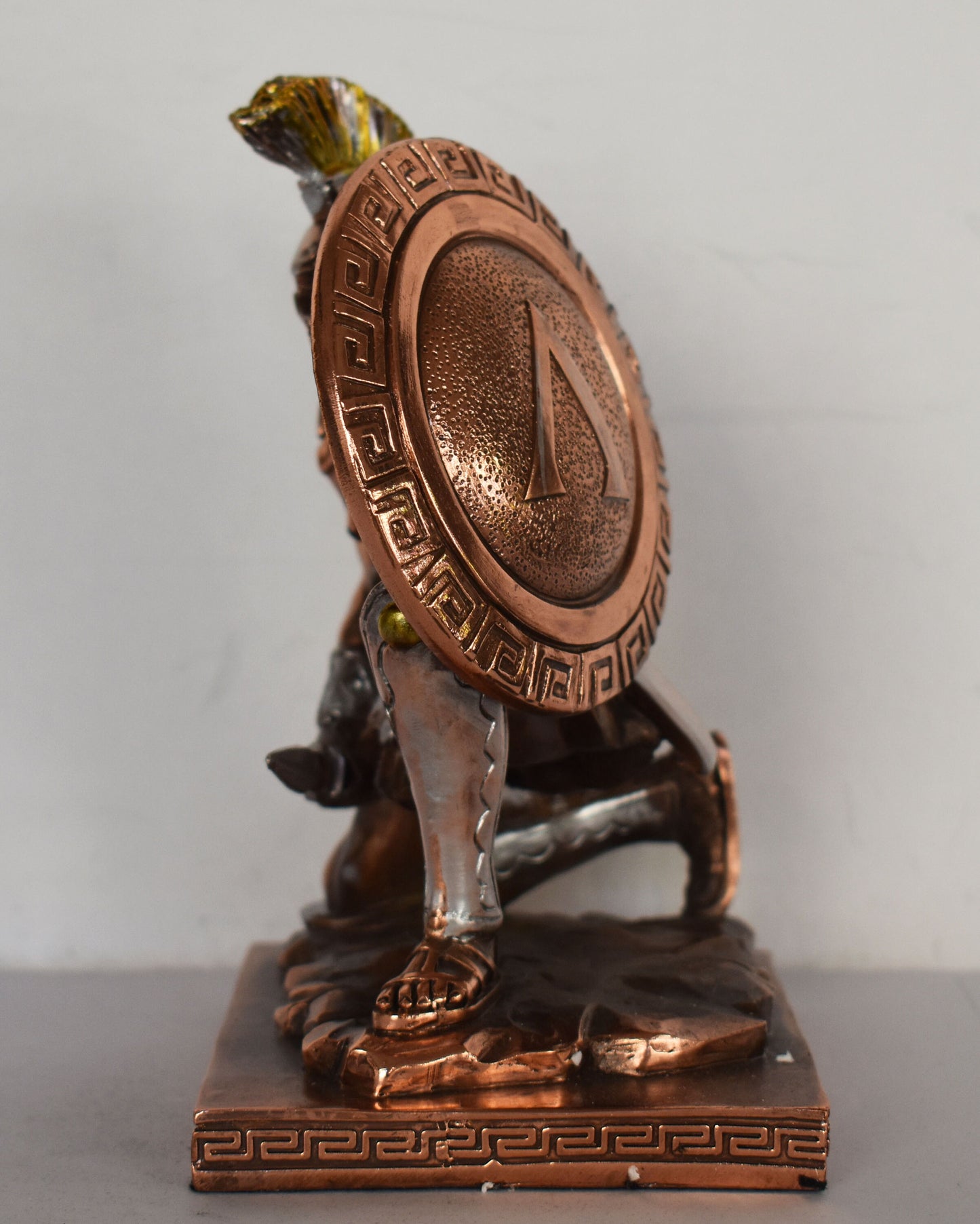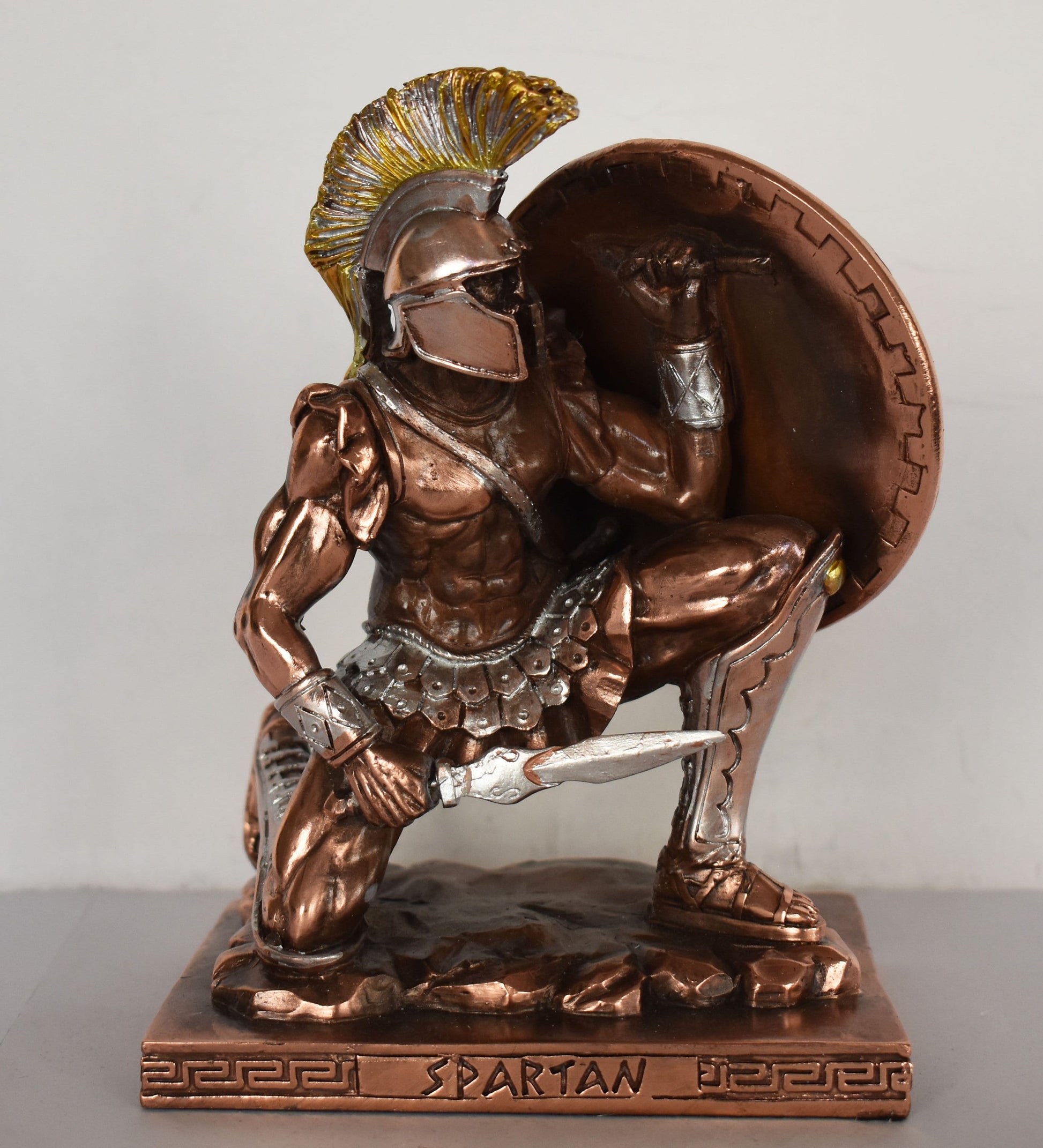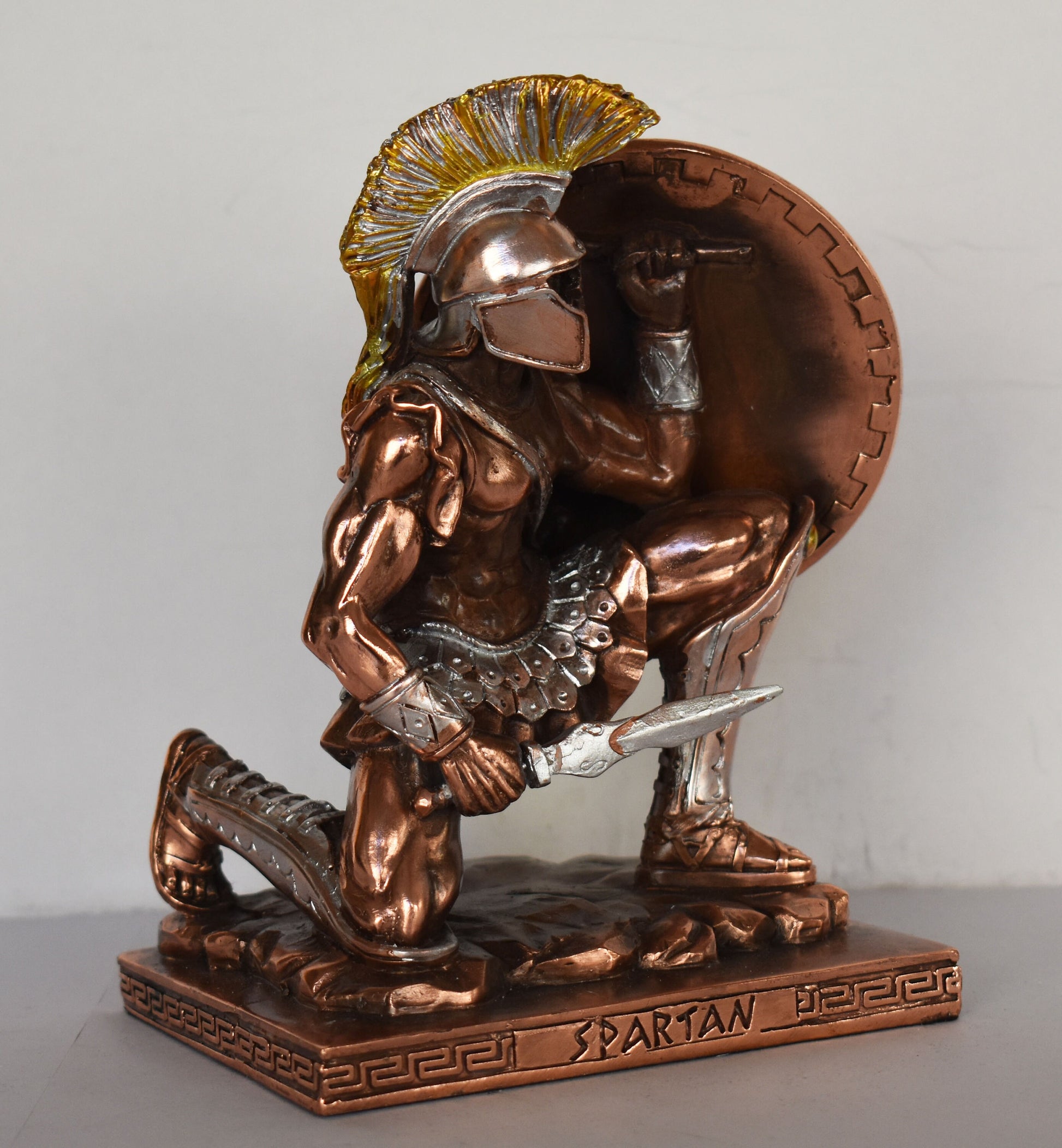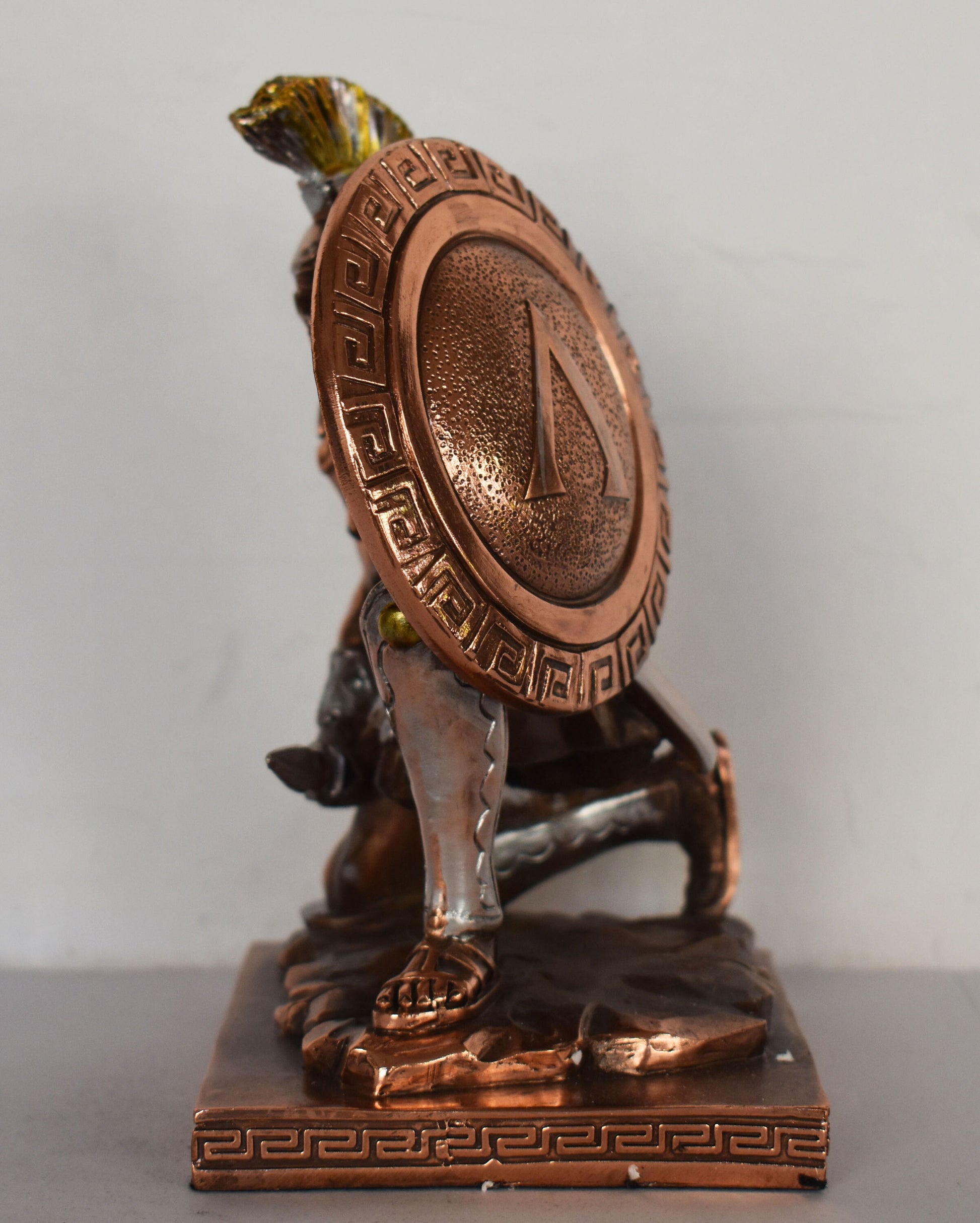Gallery Demeter
Spartan Hoplite - King Leonidas Warrior - 300 against Persian Army - Battle of Thermopylae - 480 BC - Copper Plated Alabaster
Spartan Hoplite - King Leonidas Warrior - 300 against Persian Army - Battle of Thermopylae - 480 BC - Copper Plated Alabaster
Regular price
€94,90 EUR
Regular price
Sale price
€94,90 EUR
Unit price
per
Tax included.
Shipping calculated at checkout.
Couldn't load pickup availability
Item Specifics
Details:
Condition: New
Material: Copper Plated Alabaster
Height: 17 cm - 6,7 inches
Width: 12,5 cm - 4,9 inches
Length: 9,5 cm - 3,7 inches
Weight: 790 g
A hoplite was the most common type of heavily armed foot-soldier in ancient Greece from the 7th to 4th centuries BCE, and most ordinary citizens of Greek city-states with sufficient means were expected to equip and make themselves available for the role when necessary.
Sparta, where all male citizens over 20 were members of a permanent professional army, was the notable exception to this approach of only calling up an army when absolutely needed.
Hoplites were organised into regiments or lokhoi (several hundred men strong), and they fought in ranks eight or more men deep (known as a phalanx), and standing close together, half of the shield of one man protected his neighbour on his left side. This, interestingly, meant that the phalanx often moved forward at a slight angle to the right as men sought to keep behind the shield of their neighbour. This resulted in the left flank usually breaking formation first, and so this was the flank a competent commander would attack with priority, and he would, therefore, ensure he had his best troops on his own right flank. The Greek phalanx advanced at a walk or faster, often accompanied by rhythmic music from aulos players, and shouting a tremendous war-cry (paean). On engaging the enemy the hoplites first thrust their spears, usually overarm. After that initial contact, the opposing lines usually went through a series of pushing and shoving (othismos) and close-quarter fighting with swords which only ended when one side broke ranks. The pursuit of retreating hoplites was usually only over a short distance in order to maintain the protective close formation.









